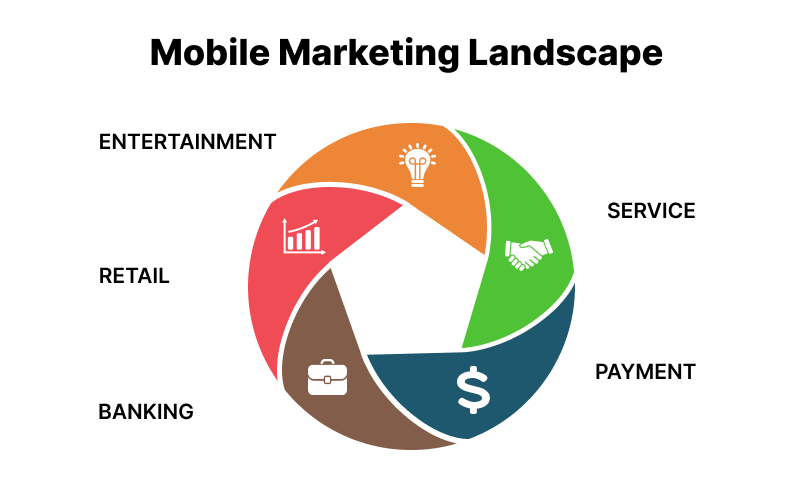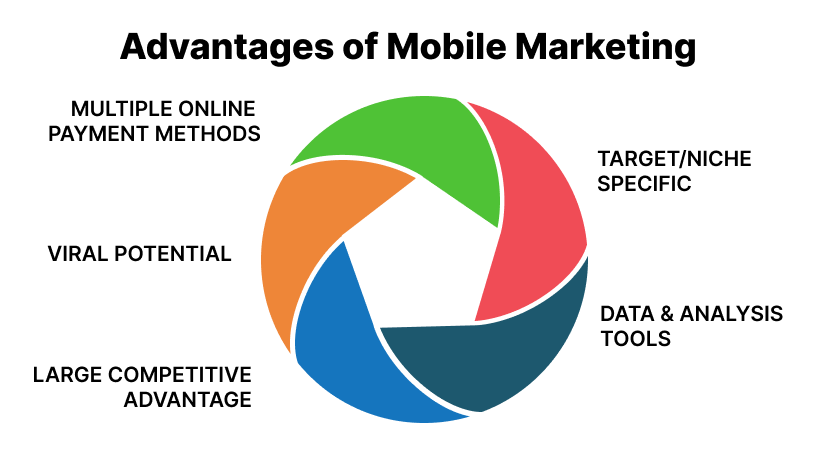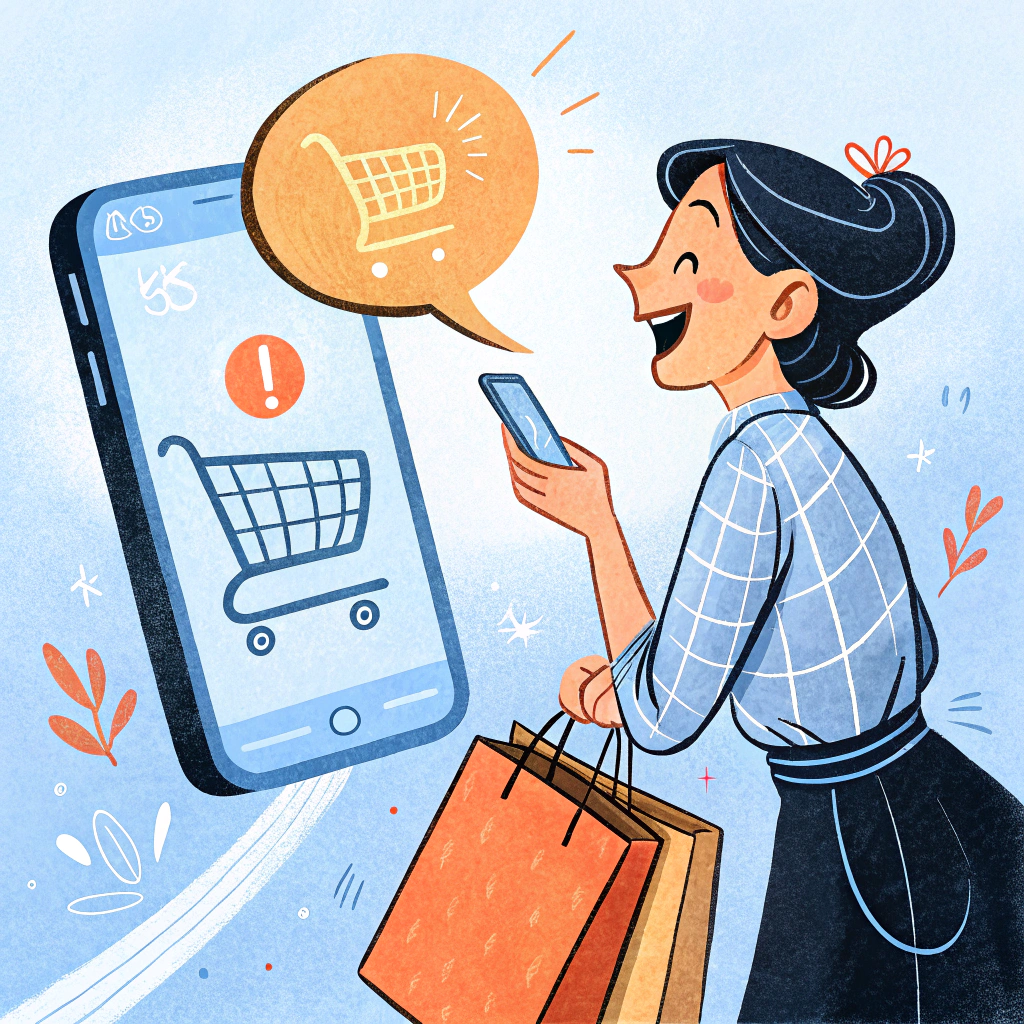There’s a 250 billion dollar opportunity, and it’s sitting in people’s pockets
Meet Sarah, a baker whose cakes could make a grown adult weep with joy. Her buttercream roses are perfection, but her sales strategy? Not so much.
She has a website, but it’s clunky. She posts on Instagram, but her efforts are scattered. She knows people spend hours glued to their phones – including her ideal customers – so why isn’t she cashing in?
Because simply existing on mobile isn’t enough to sell.
You need to meet your audience where they are. You need to make it ridiculously easy for them to buy. And you need to craft experiences that convert.
That’s where mobile marketing steps in.
With over 3.8 billion mobile users worldwide, the mobile marketing industry is projected to hit $253.40 billion by 2026.
So if you’re still treating mobile marketing like an afterthought, it’s time to rethink.
Your audience is scrolling. The only question is—will they find you?

When was the last time you didn’t have your phone within arm’s reach? Exactly.
That’s why businesses that crack the mobile marketing code are raking in sales, while others are stuck wondering why their desktop-only ads are flopping.
Mobile marketing is about understanding how people behave on their phones and meeting them where they are, with content they actually want to engage with.
Plus, it helps to keep things pretty. Ever notice how you’re more patient with a gorgeous app than a clunky one? That’s the ‘Aesthetic-Usability Effect’ in action—a fancy way of saying that people are more forgiving of flaws when something looks good. Apple, for example, has mastered this. Its sleek, intuitive interface makes even its most stubborn fans overlook the occasional bug (looking at you, iOS updates!). If your ads, emails, or mobile site look like they were made in 2010, users won’t stick around. But if your brand invests in clean visuals, smooth navigation, and engaging content, people are more likely to stick around—and, more importantly, buy.
Effective mobile advertising strategies aren’t just about showing up on small screens; they’re about making sure your brand owns that space.
If your marketing strategy still revolves around desktop users and billboard ads, you’re basically leaving money on the table.
Here’s why your business needs to get on top of its mobile advertising.

Ever received a push notification for a flash sale right when you were about to buy that new gadget? That’s no coincidence—that’s behavioral psychology at work.
Mobile marketing helps you find and hit the right users at the right moment.
According to Stanford’s ‘Fogg Behavior’ Model, people take action when motivation, ability, and a trigger align. That’s why a well-timed push notification (“Hey, your cart is lonely—checkout now for 10% off!”) can seal the deal, while a poorly timed one (like a discount alert at 3 AM) gets ignored.
Think of how Amazon’s “Buy Again” push notifications remind you when you’re running low on essentials—because who actually remembers to reorder toothpaste on their own?
Raise your hand if you’ve ever made a questionable late-night purchase just because it was too easy. (No judgment, we’ve all been there.)
That’s the magic of mobile marketing—seamless, one-tap transactions that remove friction from the buying process. Whether it’s Apple Pay, Google Pay, PayPal, businesses are making it easier than ever to capitalize on impulse shopping.
Starbucks’ mobile app lets users pre-order and pay with a tap—because waiting in line for coffee is so 2010.
A single tweet. A few influencer mentions. Some very dramatic Instagram reels. And Boom! Sold out nationwide.
That’s the power of viral mobile marketing.
With the right mix of social media buzz, shareable content, and strategic engagement, brands can turn customers into unpaid brand ambassadors. When your audience does the marketing for you, it’s basically free advertising.
Remember the Ice Bucket Challenge? A genius mix of mobile marketing, social sharing, and FOMO turned a simple fundraising idea into a global phenomenon.
Gone are the days of generic marketing blasts (cough radio ads). Mobile marketing allows businesses to laser-focus on the people who actually care.
With geo-targeting, interest-based advertising, and behavioral tracking, you can serve the right ad to the right person at the right time.
Want to target sneakerheads who love exclusive drops? There’s a campaign for that. Looking for pet owners who spoil their dogs? There’s an audience for that too.
Nike’s SNKRS app uses location-based notifications to alert users of exclusive sneaker drops in their city—creating urgency and insane demand.
You don’t need a Super Bowl ad budget to crush it in mobile marketing.
Mobile marketing for small businesses helps you compete with industry giants by leveraging tools like social media ads, SMS marketing, and influencer partnerships.
Dollar Shave Club’s viral video (shot with the bare minimum in funding) turned a small startup into a $1 billion company.
Nobody likes boring ads. The most successful mobile marketing campaigns go beyond banner ads and create fun, interactive experiences.

Gamification, AR filters, and social media contests make customers feel like part of the brand instead. It’s marketing that feels fun, rather than feels like selling.
Remember McDonald’s Monopoly game? It was a marketing campaign so addictive that people would buy fries just for the stickers.
The beauty of using mobile marketing to increase sales? You know exactly what’s working—and what’s flopping.
Unlike the hit-or-miss old-school marketing, mobile campaigns give you real-time insights into clicks, conversions, and engagement. A/B testing lets you tweak campaigns in real-time, so you’re never throwing money at something that isn’t working.
Spotify Wrapped isn’t just a fun feature; it’s a data-driven marketing powerhouse that boosts engagement and gets users to market the brand for free.
Getting a sale is great. Keeping customers coming back is even better.
Mobile marketing goes beyond one-time transactions: think loyalty programs, personalized discounts, and engaging content that keeps users invested.
Sephora’s Beauty Insider program keeps customers hooked with personalized offers, early access to products, and exclusive rewards.
Mobile marketing isn’t just effective—it’s fast.
Unlike traditional campaigns that take months to show results, mobile advertising delivers near-instant feedback.
Take Glossier. The beauty brand built a cult following by leveraging mobile-first marketing, particularly Instagram ads and influencer partnerships, leading to skyrocketing sales practically overnight.
Mobile marketing gets you eyeballs, and gets you action.
With highly targeted strategies, businesses can drive users straight to their online store, landing page, or social profile, where they’re most likely to convert. Bonus? It also gives your search rankings a boost, making your business even easier to find.
Airbnb mastered traffic by using mobile ads and push notifications to re-engage users, turning casual browsers into paid travelers in a few taps.
No office? No problem.
Mobile marketing lets you manage campaigns from anywhere with WiFi, meaning you can drive sales from your couch, a coffee shop, or even a beach in Bali.
Shopify entrepreneurs thrive on this, running their entire businesses through mobile apps, tracking sales, managing inventory, and launching ad campaigns, all from the palm of their hand.
A great mobile marketing strategy isn’t just about throwing ads in the dark and hoping something sticks. It’s about guiding browsers effortlessly from “Oh, this looks interesting” to “Take my money!”

Enter the Customer Journey Map (CJM)—your secret weapon for turning casual scrollers into die-hard fans.
Think of a CJM like a treasure map, but instead of gold, the prize is a loyal customer. CJM tracks every touchpoint, from that first Instagram ad they mindlessly tap on while waiting for coffee to the moment they finally hit “Buy Now” at 2 AM.
Amazon nails CJM with its frictionless one-click checkout, making it dangerously easy to go from browsing to buying in seconds.
By mapping out this journey, businesses can spot pain points, smooth out friction, and optimize every interaction, so that customers don’t just visit your mobile platform—they actually convert.
Mobile marketing isn’t all skyrocketing sales. Like any good thing, it comes with its own set of challenges.
Chatbots and automated messages feel great. Until you need actual human help.
Mobile marketing leans heavily on automation, which means customers sometimes feel like they’re talking to a robot (because, well… they are). While Amazon’s Alexa is fun when asking for weather updates, no one wants canned responses when their order goes missing.
The fix? Blend automation with a human touch—offer live chat, personalized emails, or even the occasional surprise-and-delight gesture to make customers feel seen.
Mobile devices come in all shapes and sizes—big, small, foldable (remember the Samsung Galaxy Z Flip?). And let’s not forget the iPhone vs. Android war. If your mobile ads or website look sleek on one screen but jumbled on another, you’re losing customers faster than a buffering video.
The trick? Responsive design, testing across different platforms, and making sure your content doesn’t play hide-and-seek on smaller screens.
Customers are suspicious. And who can blame them? With scammy ads, data breaches, and fake reviews flooding the internet, people are wary of brands they don’t know.
If you want people to trust you, showing them the receipts, transparent policies, verified reviews, and solid social media presence go a long way. Glossier built an empire based on authenticity by leveraging real customer testimonials and user-generated content.
Time to turn strategy into action – and to get this mobile party started.
Mobile marketing can be a goldmine, if you do it right.
Nail the experience, build trust, and optimize for mobile behavior, and you’re looking at a marketing channel that keeps on giving.

Email subscription is available ONLY TODAY (oh, okay, and tomorrow).
Surely, we respect your inbox! Unsubscription works every day.

We’d love to tailor your experience — which of these best describes you?